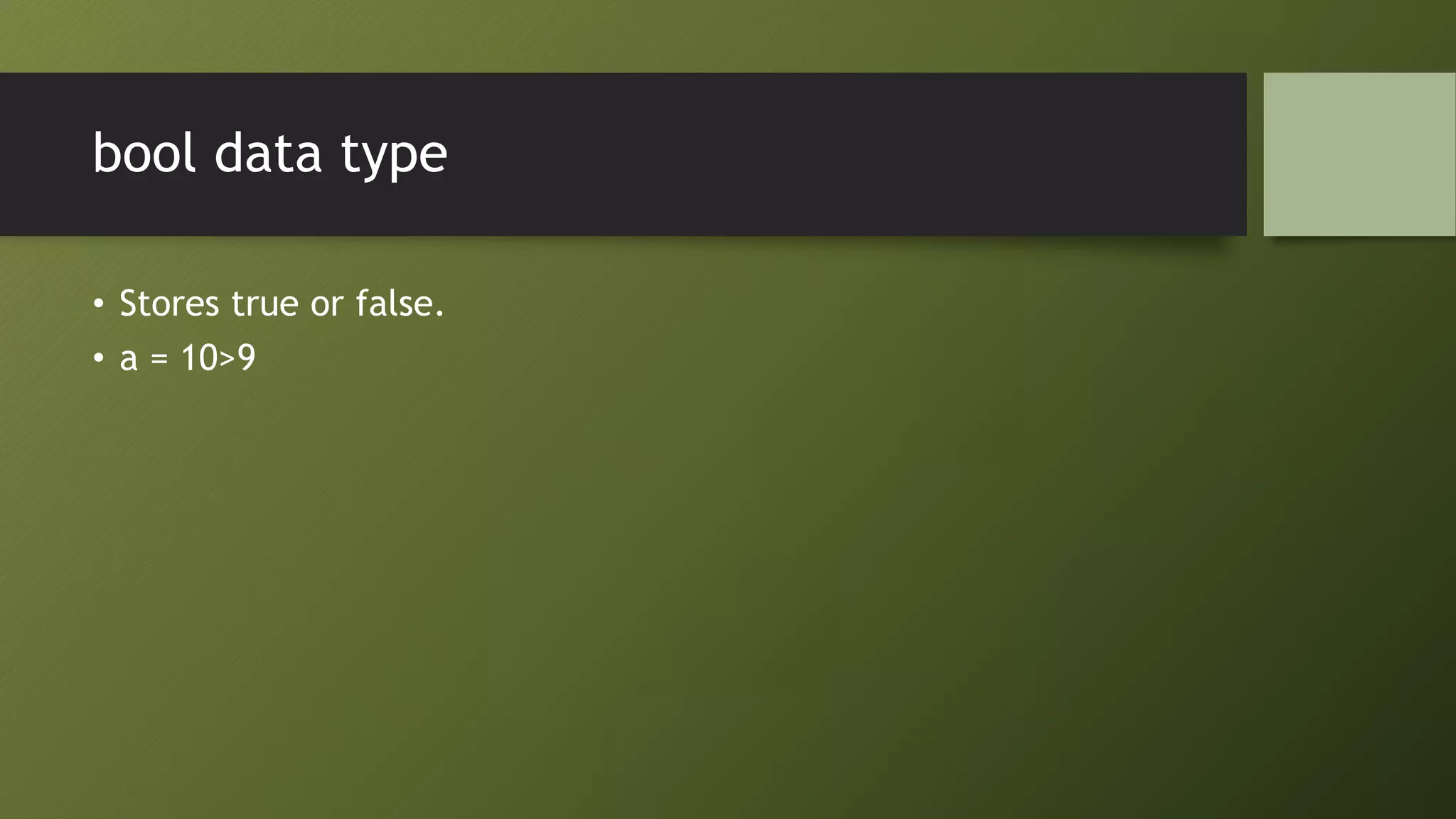This document provides an overview of Python for data science. It discusses key Python features like being an easy to read, flexible language suitable for both new and experienced programmers. It also covers fundamental Python libraries for data scientists like NumPy, SciPy, Pandas, and Scikit-Learn for tasks like numeric computing, machine learning, and data analysis. The document concludes with an introduction to Python's core concepts like variables, data types, operators, and control flow statements.
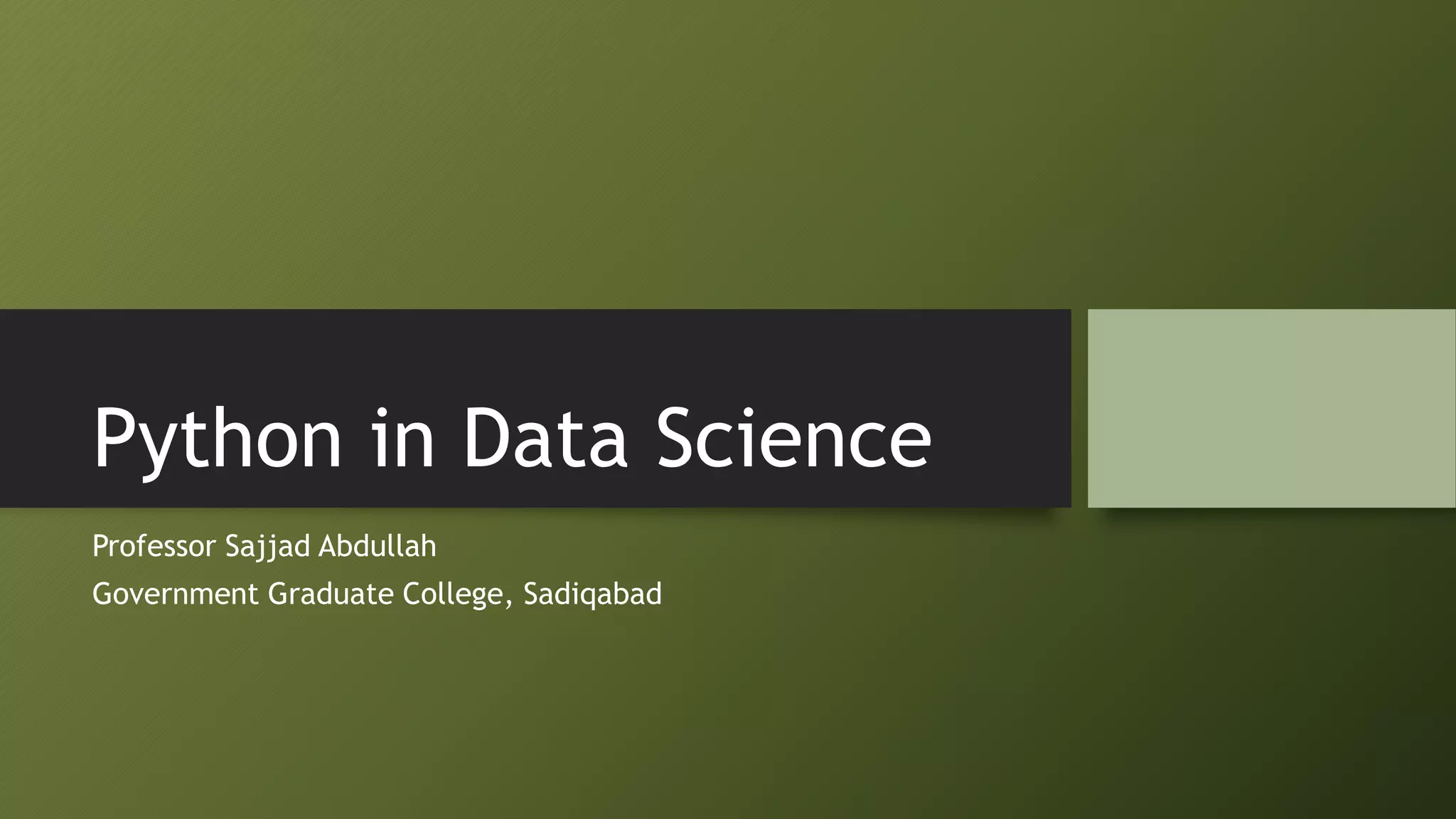


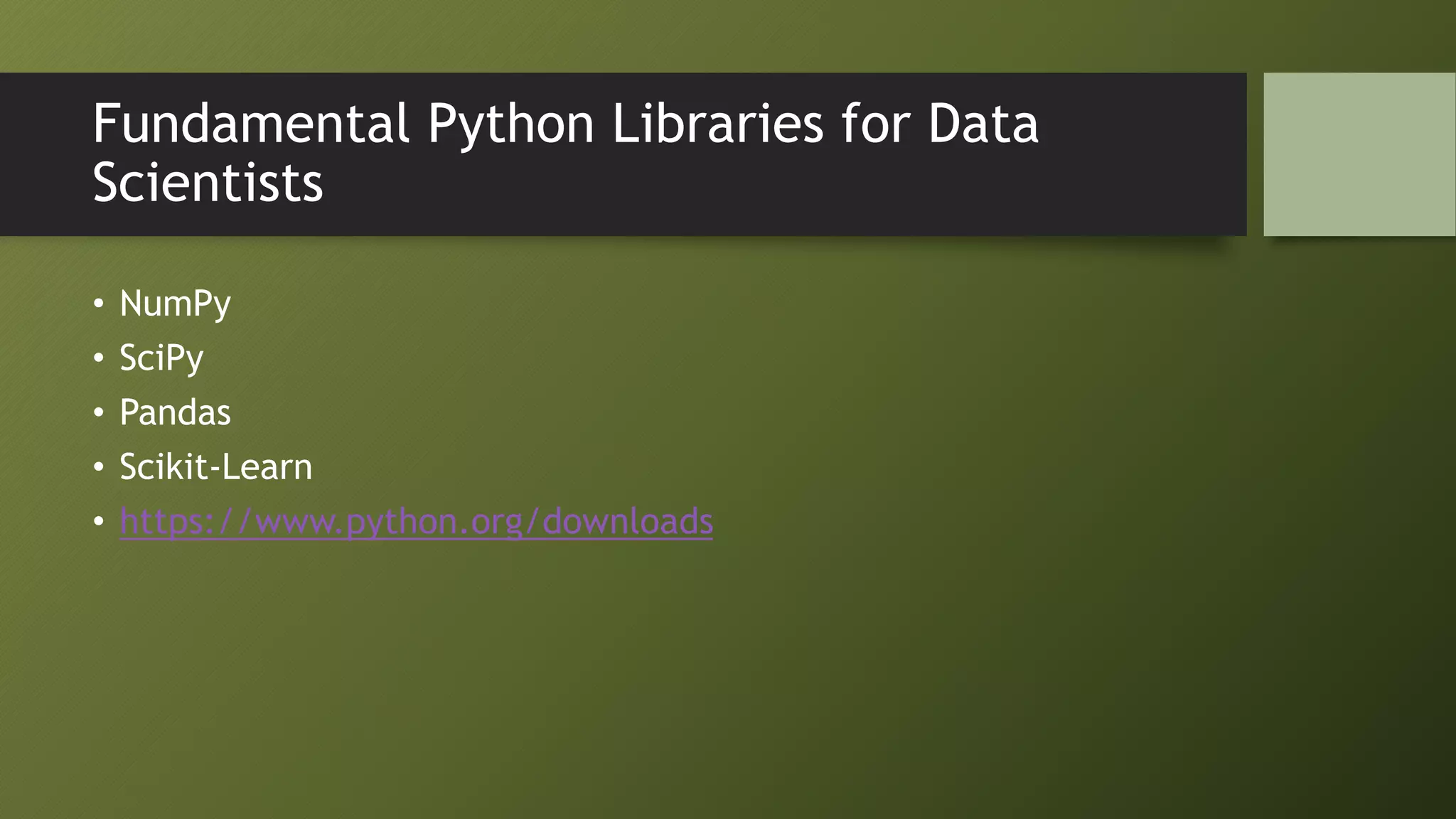
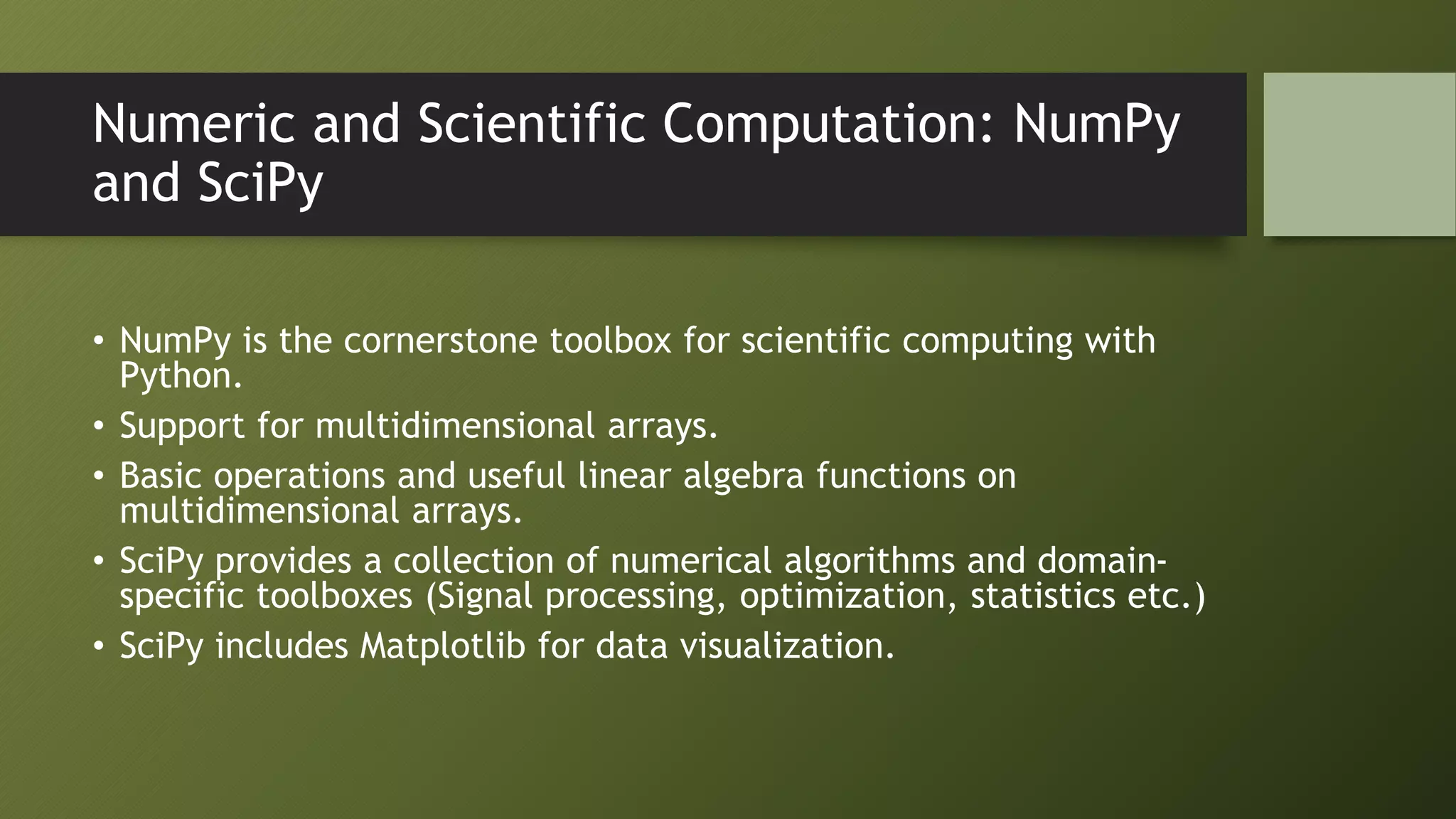
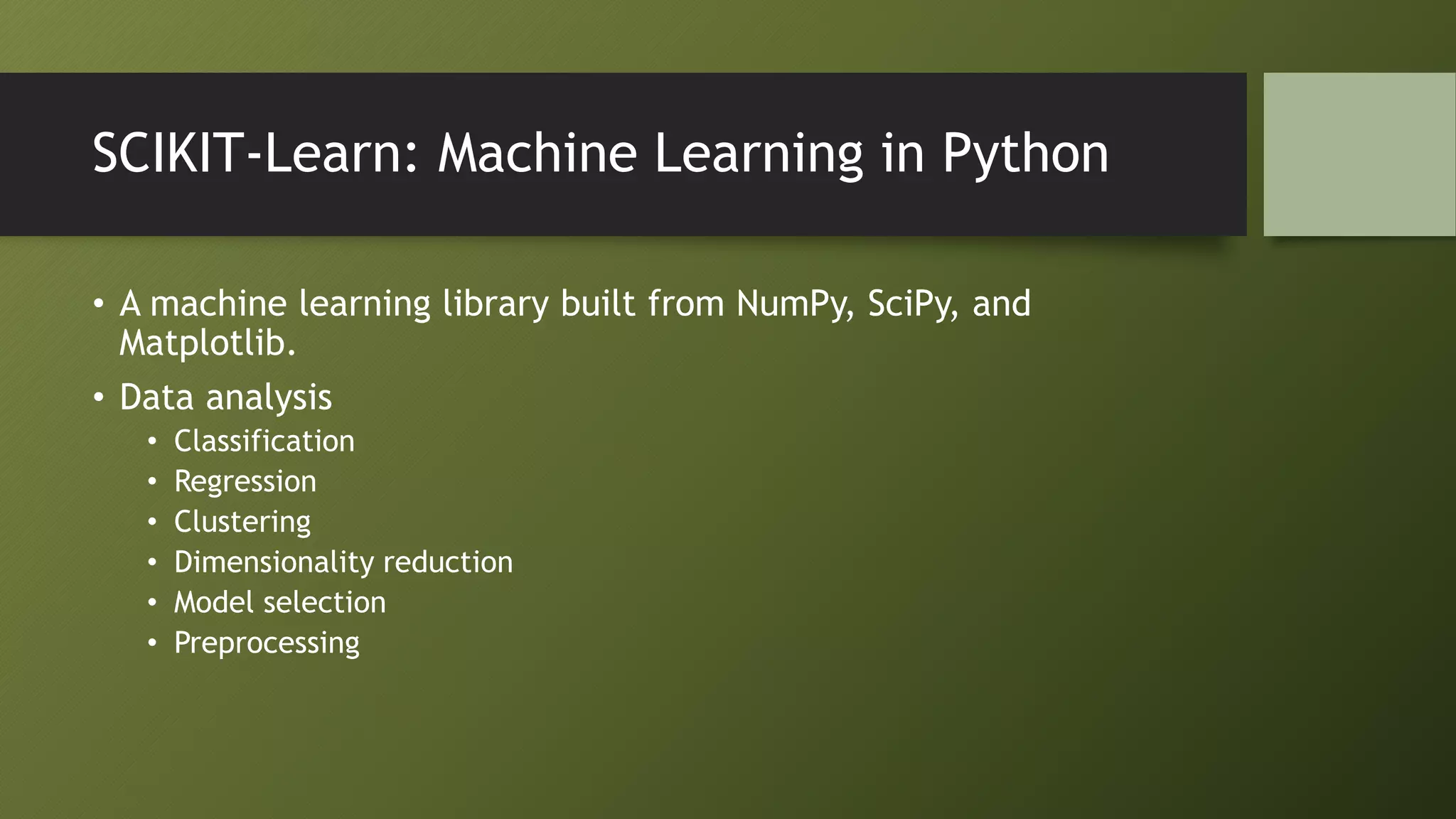
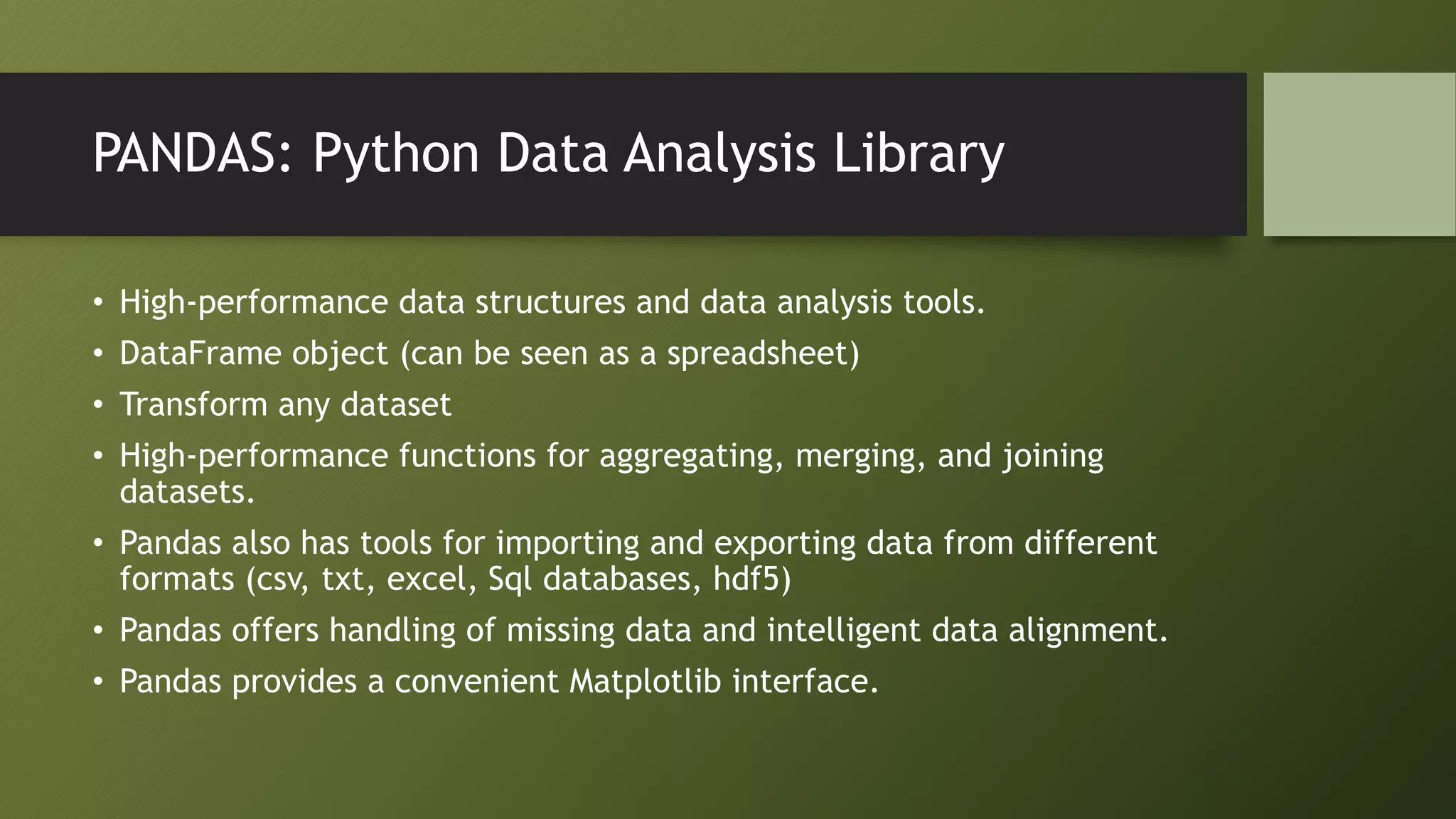
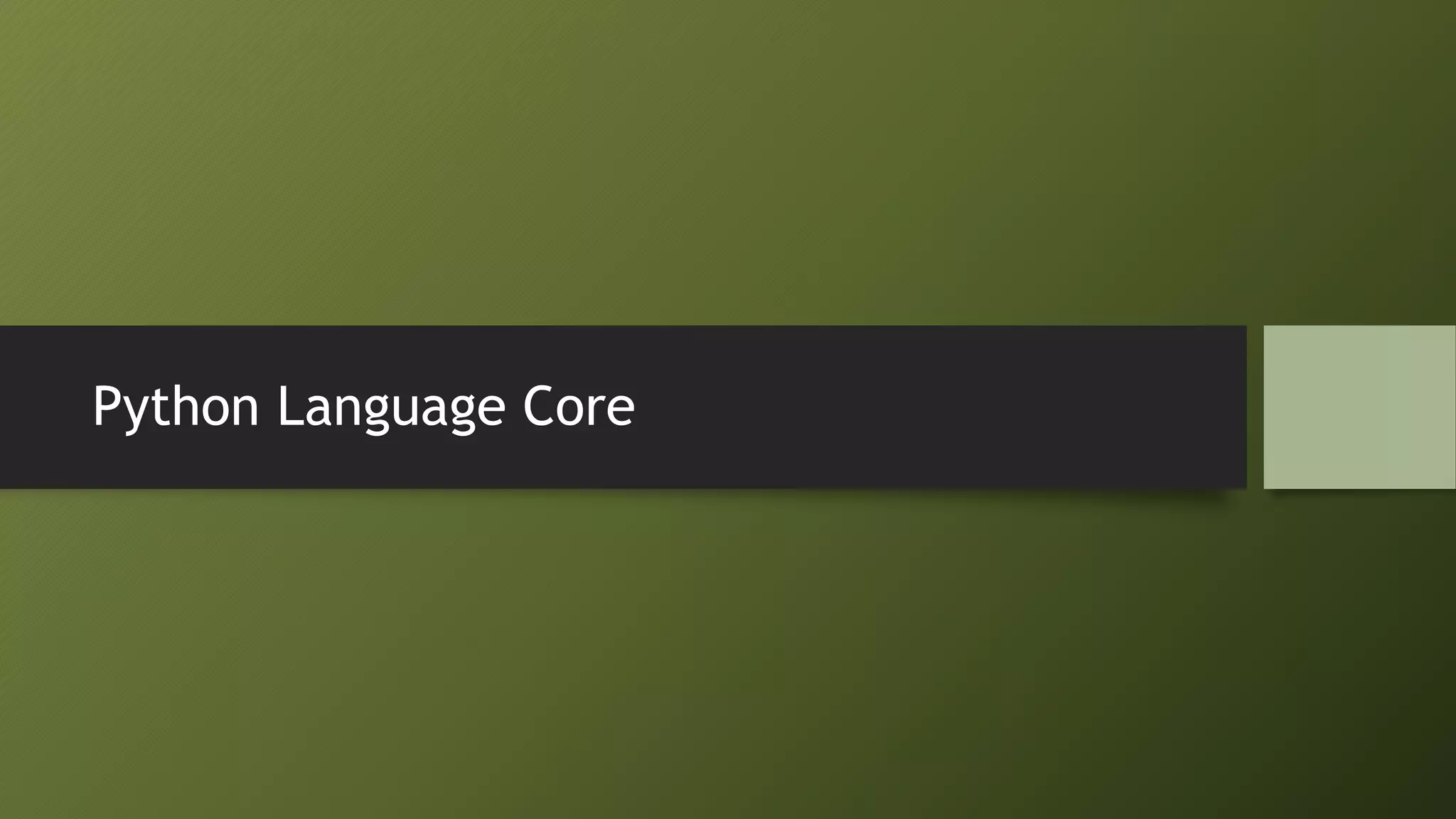
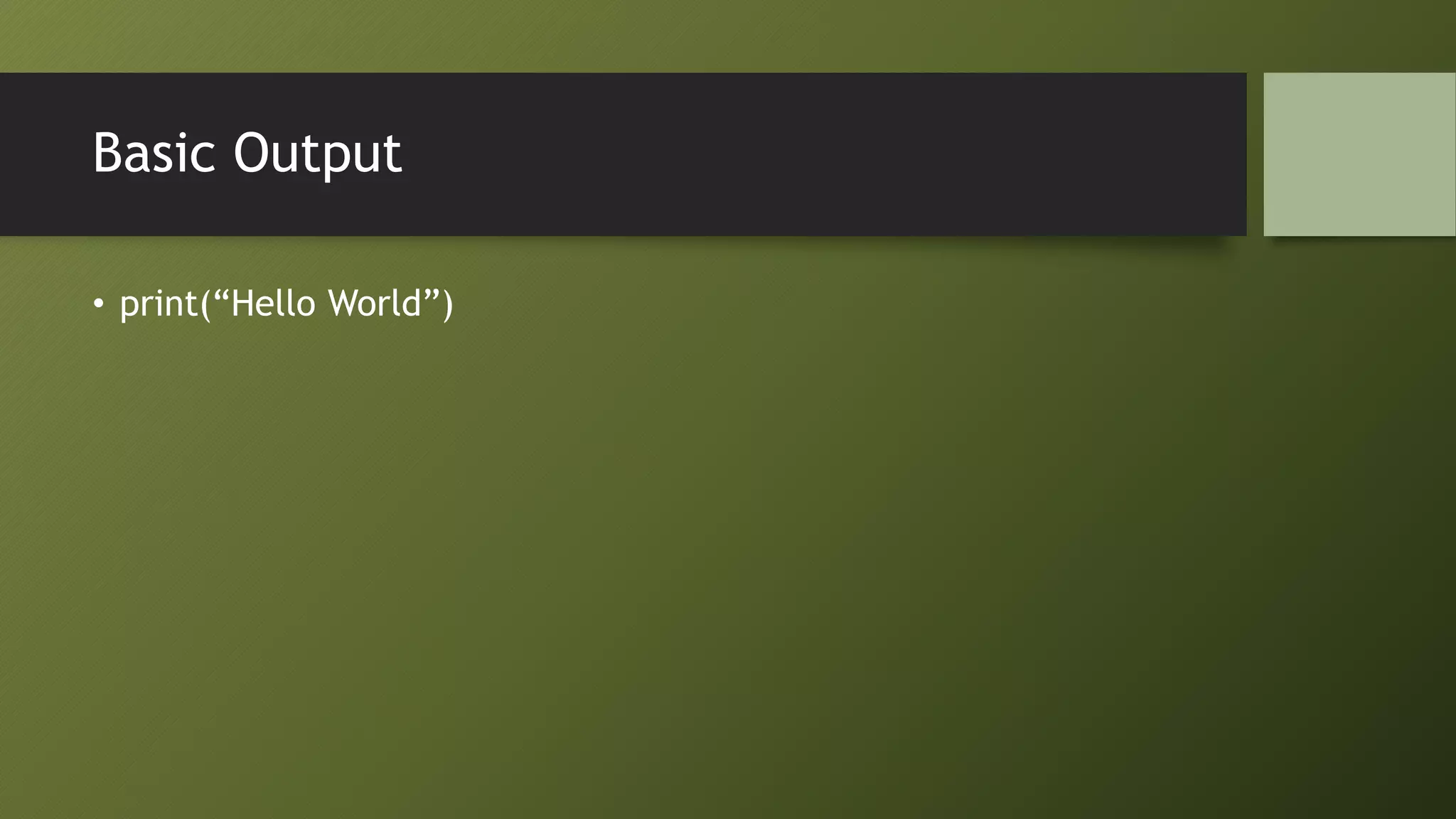
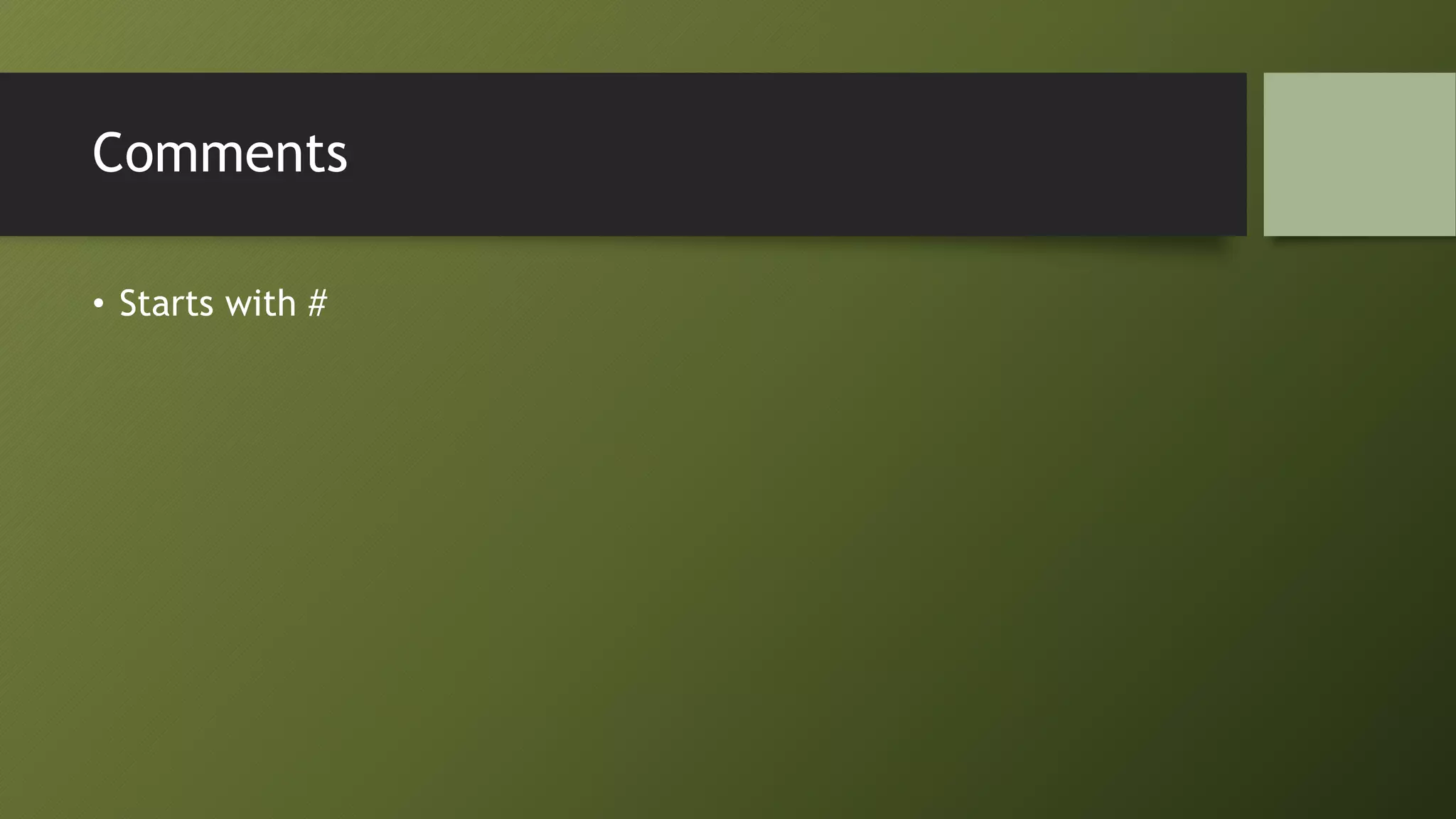
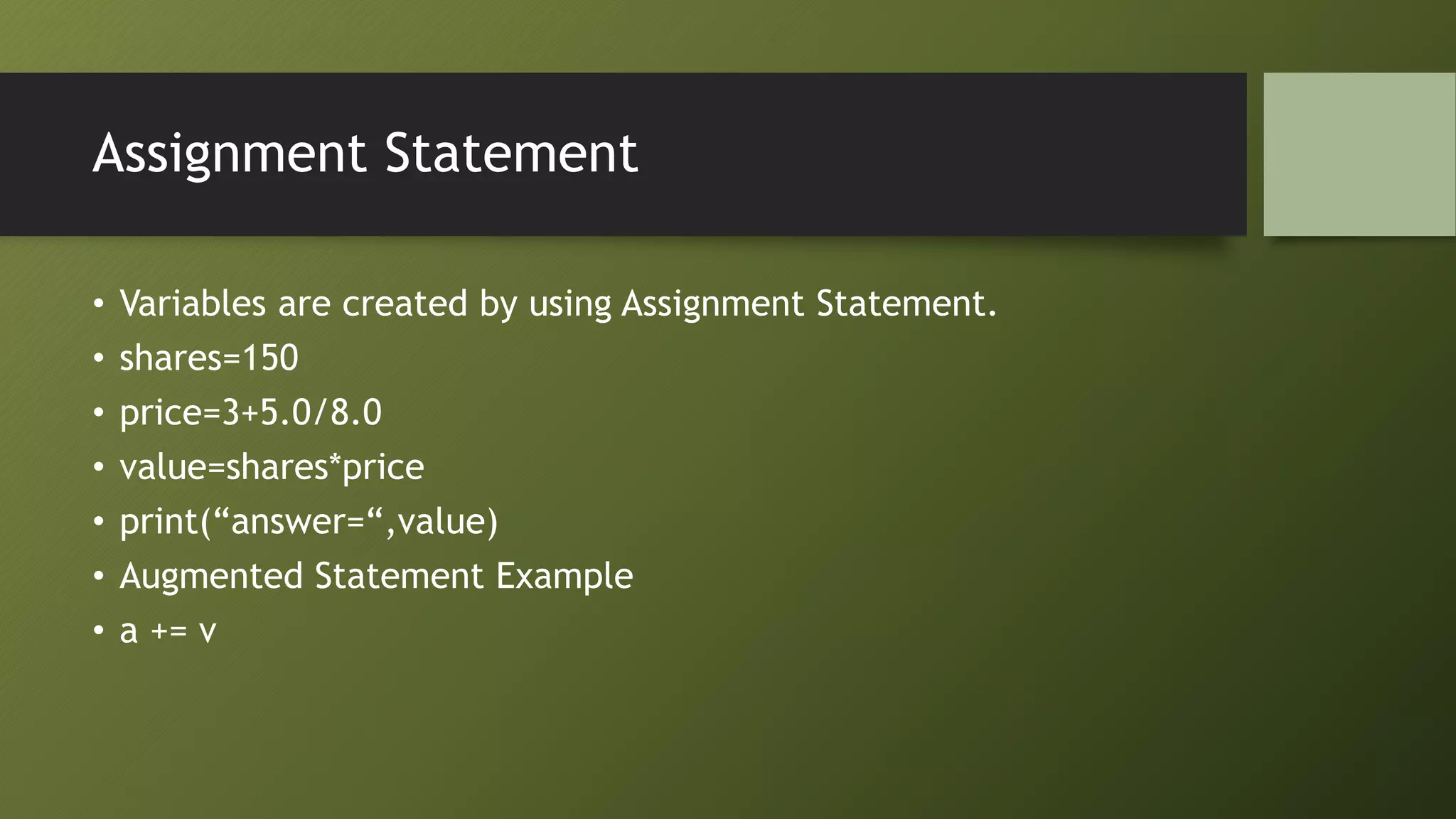
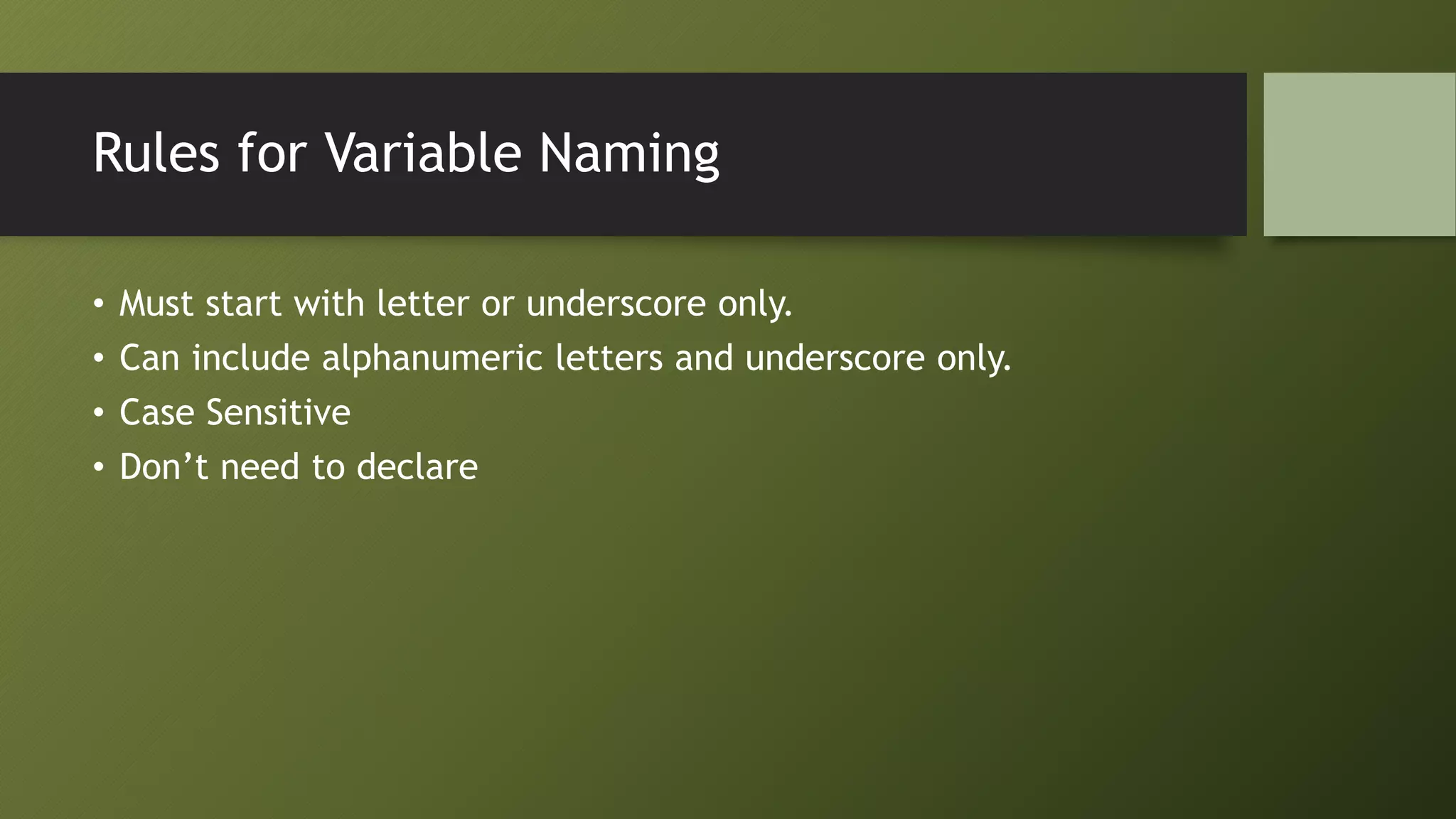
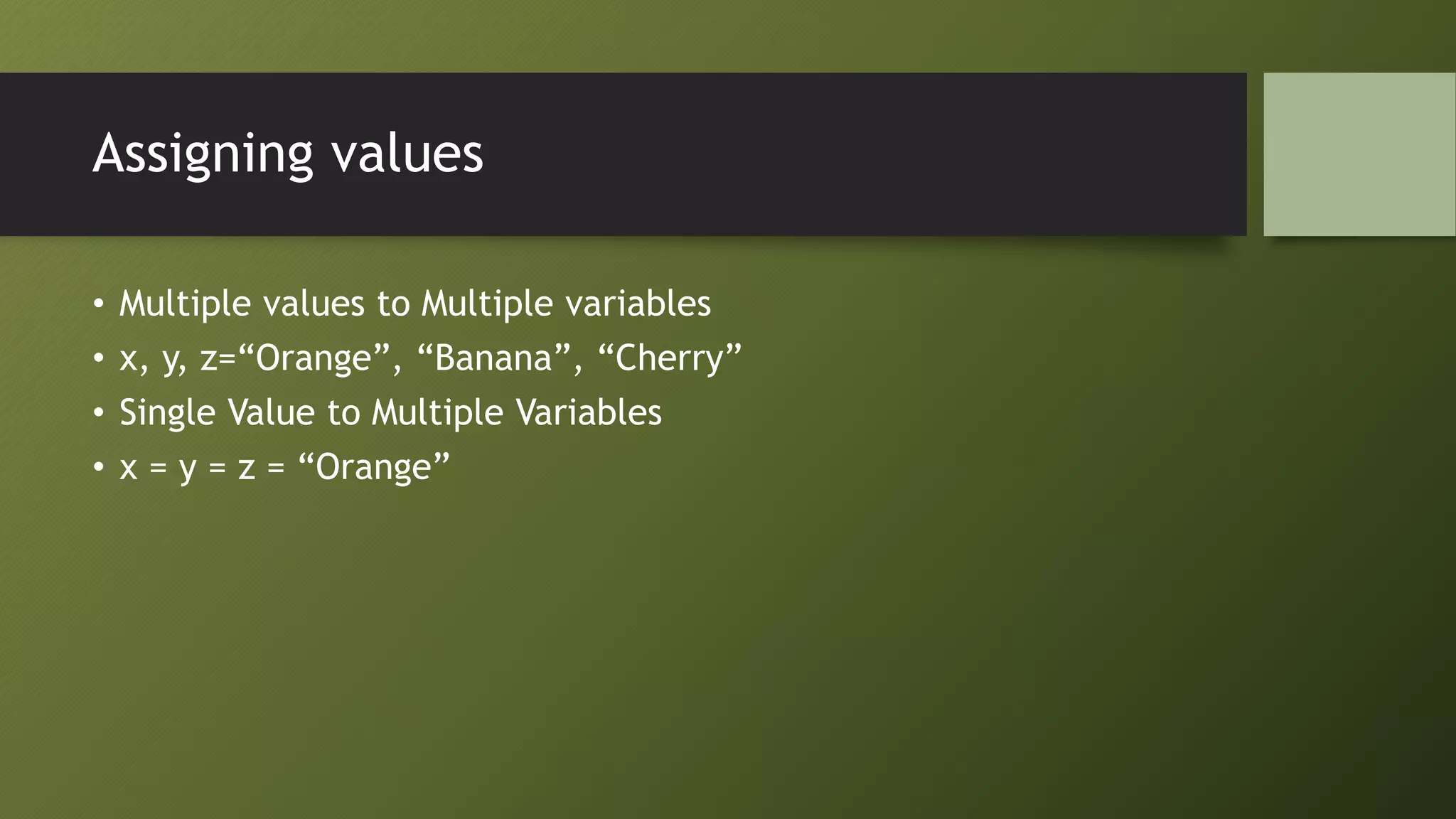


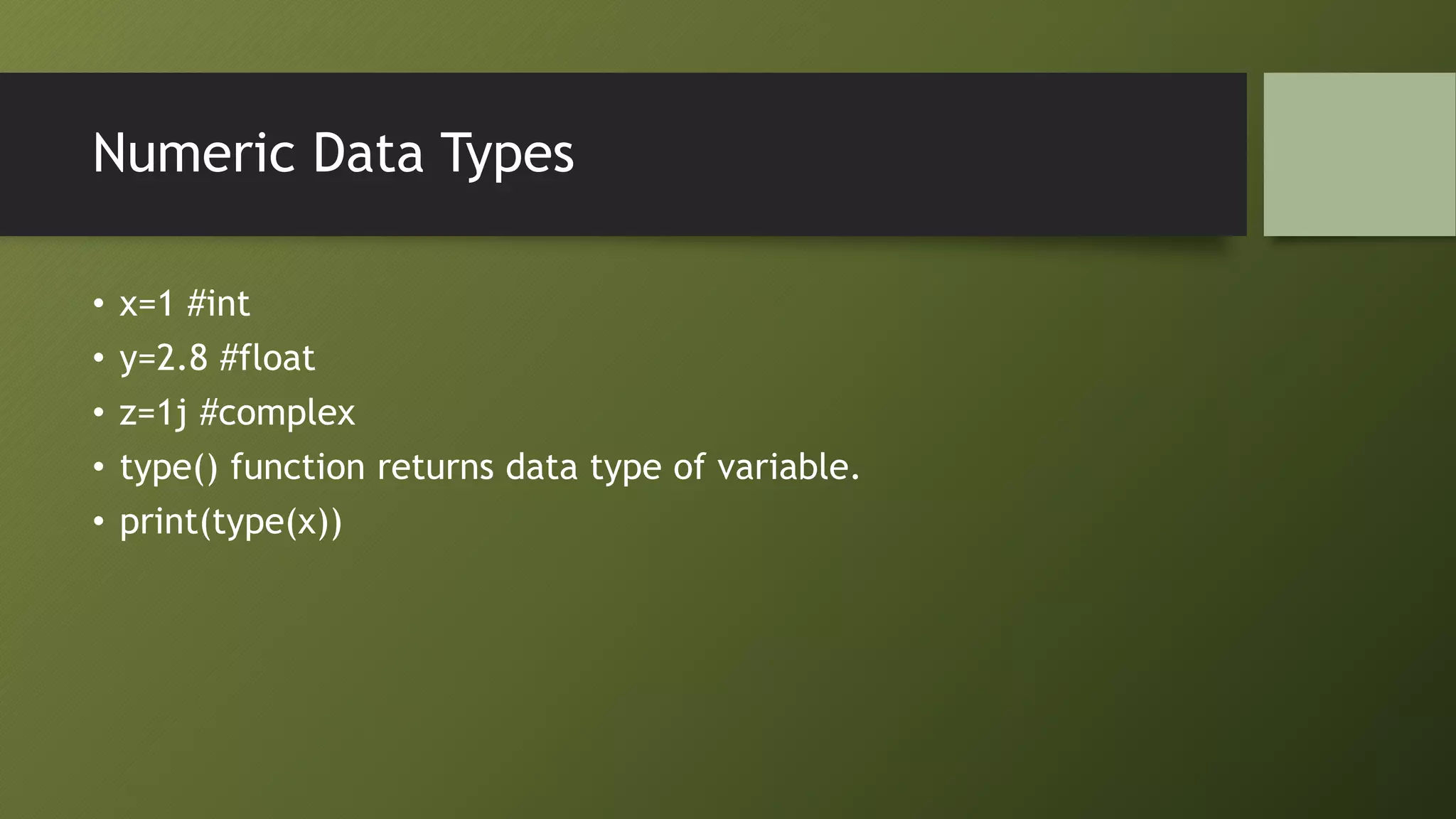
![Sequence Data Types
• list is a collection of items – organized – not fixed length - can be
changed – can store data of any type, allows duplicate values –
subset can be created.
• thislist = [“apple”, “banana”, “cherry”]
• print (thislist)
• print (thislist[1])
• Negative Indexing - -1 is last item - -2 is second last item…
• print (thislist[2:5]) #only prints items from index no. 2 to 4](https://image.slidesharecdn.com/python-230923054637-0de66ba7/75/Python-pptx-17-2048.jpg)
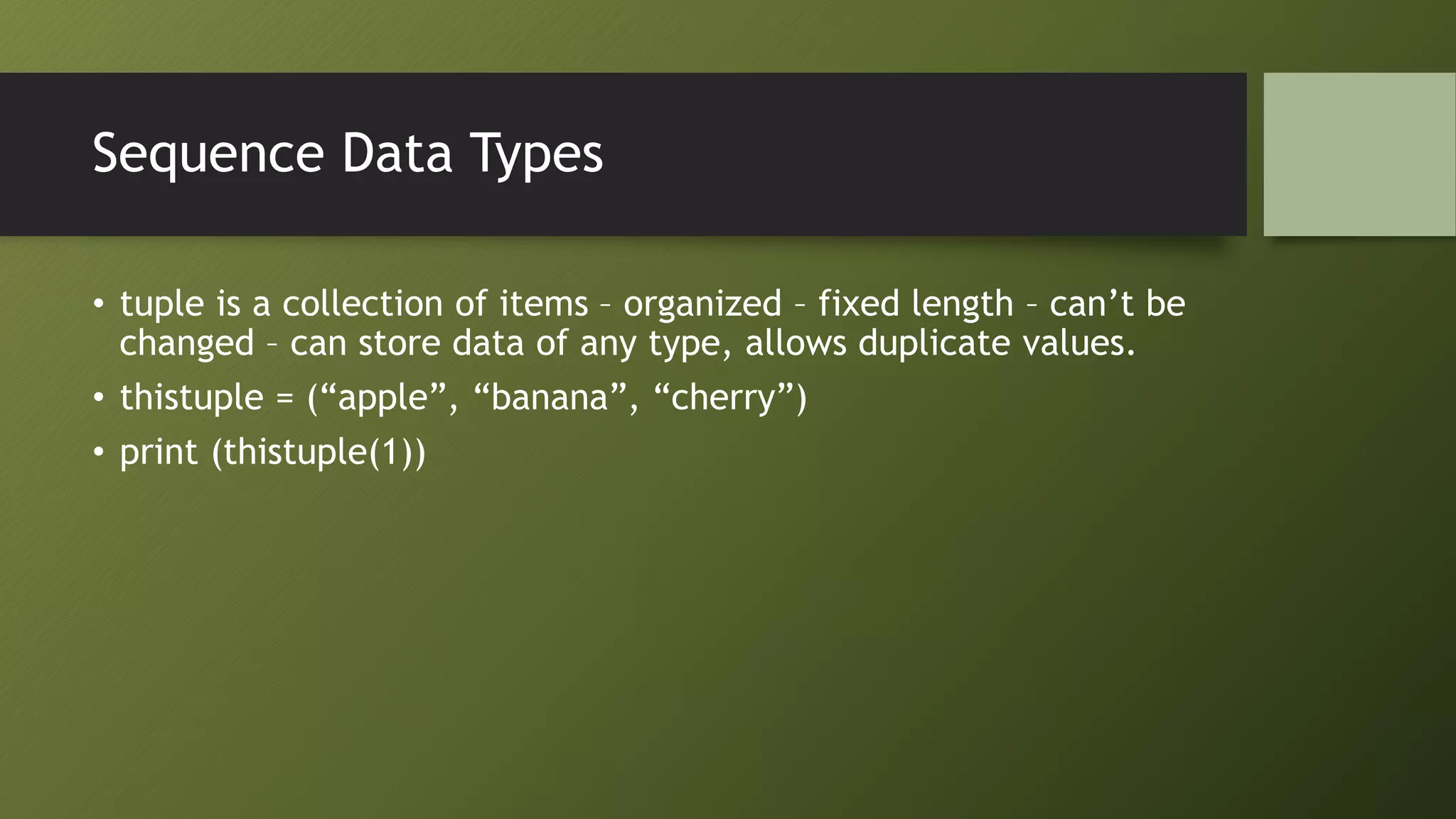
![Mapping Data Types
• dict is a collection of items – unorganized – indexed – non-fixed
length – can be changed – can store data of any type, key-value
based structure.
• thisdict = {“brand”: “food”, “model”: “Mustang”, “year”: 1964}
• print (thisdict)
• x = (thisdict[“model”])
• print (x)](https://image.slidesharecdn.com/python-230923054637-0de66ba7/75/Python-pptx-19-2048.jpg)
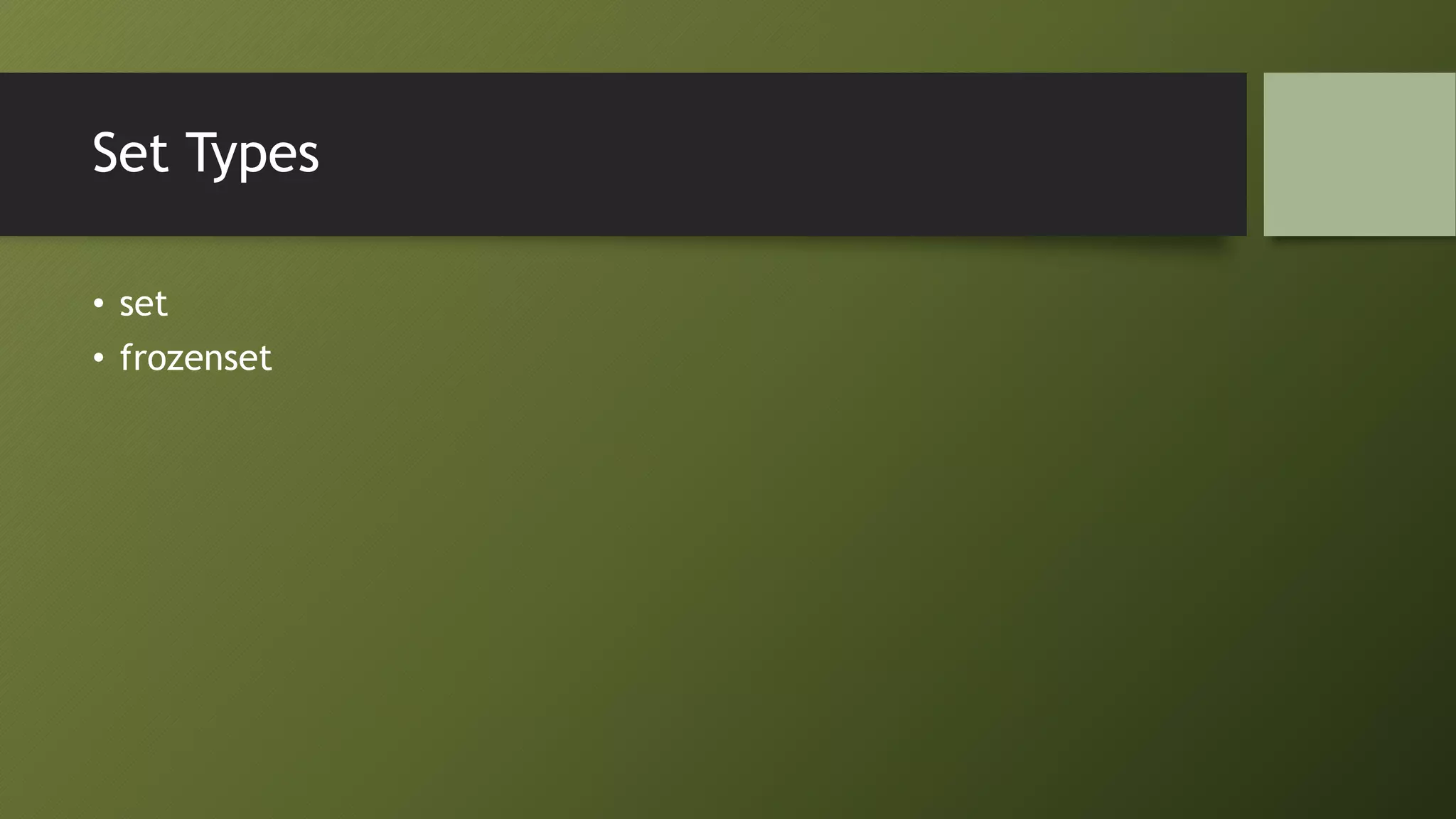
![set data type
• Collection of elements, unorganized, unindexed, no sequence,
indexing or subsetting is not possible, can store any type of data,
elements can be added or removed, duplicates are not allowed,
arithmetic operations (union, difference) are allowed
• thisset = {“apple”, “banana”, “cherry”}
• thisset.add(“orange”)
• thisset.update([“orange”, “mango”, “grapes”])
• len(thisset)
• thisset.remove(“banana”) OR discard()](https://image.slidesharecdn.com/python-230923054637-0de66ba7/75/Python-pptx-21-2048.jpg)
![frozenset data type
• Just like sets, but additions or removals are not allowed.
• cities = frozenset([“Islamabad”, “Karachi”, “Lahore”])](https://image.slidesharecdn.com/python-230923054637-0de66ba7/75/Python-pptx-22-2048.jpg)
